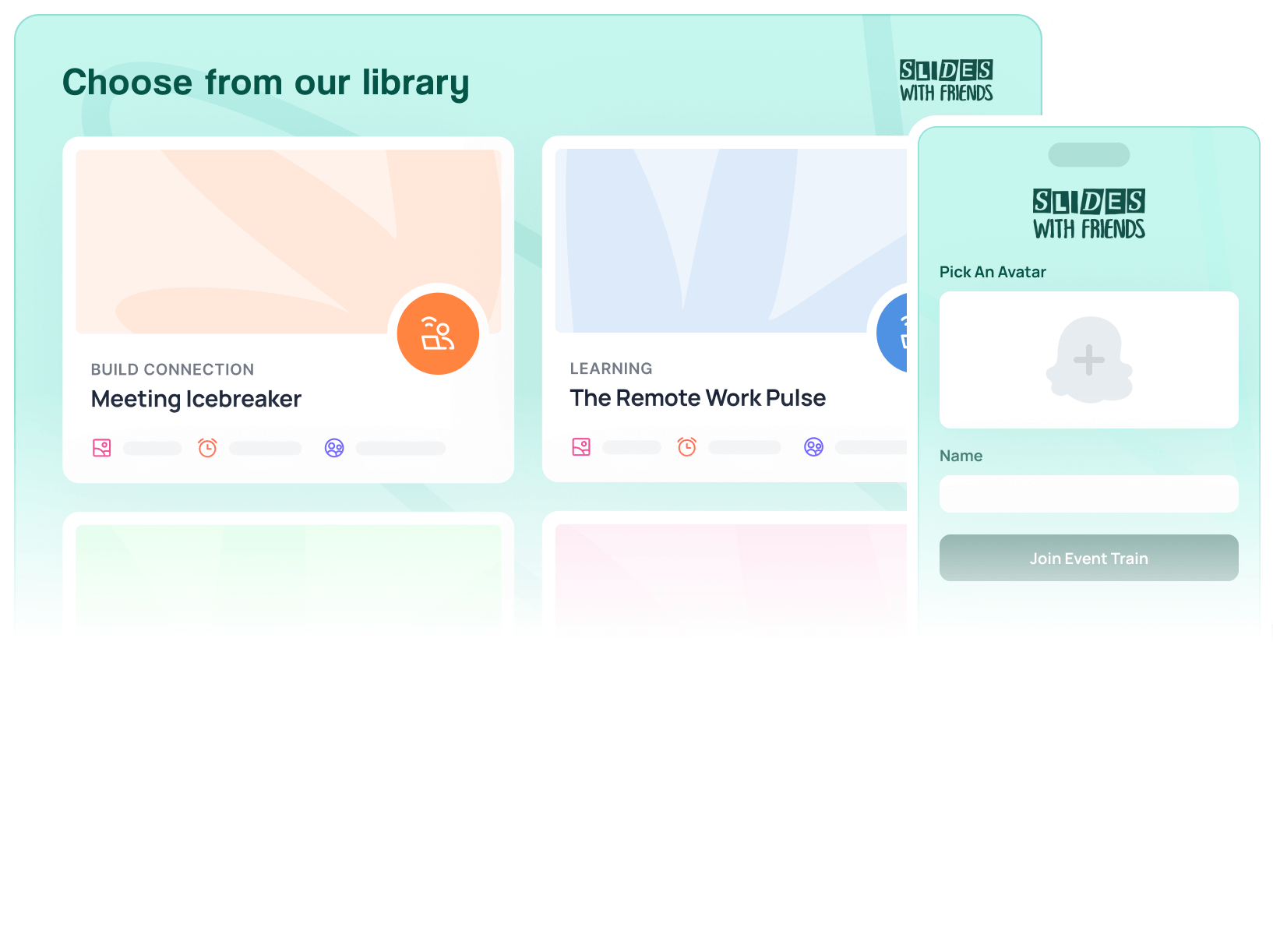What is Microlearning and How to Use it in Your Company
Learn about the benefits of microlearning and how you can leverage the best microlearning platforms to engage your employees and grow your company.

The concept of microlearning" can feel corporate-hacky. The idea that we can somehow squeeze more into our over-stuffed day and get more out of it just because it's small might seem a little backwards.
But there is a nugget of something useful here: learning that is curated into bite-sized pieces is easier to digest.
And if we first remove the meetings that are too long or not valuable enough and replace them with either self-directed, flexible lessons, or bite-sized meetings that really work to both teach and engage your group together in a short amount of time, the benefits become clear.
With microlearning, everyone can master a new skill in the time it takes to drink a morning coffee.
This guide explores the benefits and best practices and recommends the best microlearning platforms for getting started.

Photo by Canva Studio
Why Microlearning is Essential in 2024
Two key trends are driving microlearning adoption:
- People want flexible, on-the-go learning. Traditional, lengthy training sessions are less appealing. Learners today prefer methods that fit into their busy schedules. They want to access educational content anytime and anywhere through mobile apps, online courses, or bite-sized modules.
- There's a focus on personalized, just-in-time learning. Tailored content delivered when needed ensures relevance and immediate use. This approach helps learners receive specific information and skills exactly when needed, increasing knowledge retention and practical application.
Benefits for Companies
Microlearning offers several important benefits for companies. Here are some key advantages that businesses can gain from using microlearning.
- Improved engagement and retention rates. Microlearning is concise, focused content that employees can easily grasp and remember. This increases engagement and retention, allowing learners to apply the information in their daily tasks quickly.
- Cost-effectiveness and scalability. Microlearning can save costs compared to traditional training. It enables companies to quickly create and share content, scaling their programs efficiently to meet organizational growth without heavy expenses.
- Improved ability to meet the needs of remote and hybrid workforces. Microlearning is perfect for remote and hybrid teams. It offers flexible, on-demand training, letting employees learn at their own pace and on their own time. This ensures they stay current with the latest skills and knowledge, no matter where they are.
Implementing Microlearning in Your Organization
Implementing microlearning in your organization can be seamless if approached strategically and thoughtfully. Here are a few tips on how to use microlearning successfully:
Identifying Training Needs
Even with an in-person workforce, gathering all your employees into one room can be challenging. Thankfully, microlearning on digital platforms offers an easier way and can improve content retention.
Before creating microlessons, determine what your employees need to learn. What skills should they develop? Will microlearning complement or replace in-person training? When will employees take these courses?
Designing Effective Microlearning Content
When creating microlearning modules, aim to deliver complete concepts in bite-sized tasks. Avoid drawing things out; give your employees the key information upfront.
Consider using gamification as it has proven highly effective in education, significantly increasing motivation and keeping learners engaged.
The Best Microlearning Tools to Keep Workers Educated and Happy
Self-Directed Learning
Self-directed learning lets employees take charge of their own education. This flexible approach means they can choose what to learn and when, making the process really personalized and efficient. It means less time spent organizing training sessions for managers and more time for employees to engage with the material.
Micromeetings
Micromeetings, or short group sessions, are a great way to deliver training in small, engaging chunks. These focused meetings fit into busy schedules without overwhelming anyone. During these meetings, employees can discuss specific topics, share insights, and solve problems in real time. For managers, micromeetings are useful to reinforce learning, address issues quickly, and keep everyone aligned on key objectives. The interactive nature of these sessions keeps employees engaged and fosters a sense of community and teamwork.
Implementing Microlearning in Your Organization
Implementing microlearning in your organization can be seamless if approached strategically and thoughtfully. Here are a few tips on how to use microlearning successfully:
Identifying Training Needs
Even with an in-person workforce, gathering all your employees into one room can be challenging. Thankfully, microlearning on digital platforms offers an easier way and can improve content retention.
Before creating microlessons, determine what your employees need to learn. What skills should they develop? Will microlearning complement or replace in-person training? When will employees take these courses?
Designing Effective Microlearning Content
When creating microlearning modules, aim to deliver complete concepts in bite-sized tasks. Avoid drawing things out; give your employees the key information upfront.
Consider using gamification as it has proven highly effective in education, significantly increasing motivation and keeping learners engaged.
Integrating Microlearning with Existing Training Programs
Microlearning can supplement key concepts covered in larger training sessions. For instance, after a full-day workshop on a new software tool, employees can use microlearning modules to reinforce their understanding of specific features. Or, after completing a comprehensive orientation session, new hires can access microlearning modules to deepen their understanding of HR protocols, safety guidelines, or customer service standards.
Top Microlearning Platforms in 2024
In 2024, several microlearning platforms stand out for their effectiveness and user-friendly features. Here are some of the top microlearning platforms to consider.
Axonify

Axonify is one of the best microlearning platforms. This eLearning platform is designed for employees and focuses on retaining knowledge, increasing employee performance, and keeping engagement high. Offering quick micro-lessons helps fill in knowledge gaps and supports effective employee training during the workday.
LearnWorlds

LearnWorlds focuses on creating engaging and effective training experiences. The platform offers interactive videos, ebooks, 1:1 and group sessions, assessments, certificates, and more. Designed for versatility, users can create courses with beautiful themes and flexible pathways. Its innovative video learning transforms videos into exceptional experiences with transcripts, quizzes, and tables of contents.
Whatfix

Whatfix’s digital adoption platform guides users through complex processes in real time. It helps employees learn to use essential software, applications, and digital tools effectively. Whatfix breaks the content into manageable chunks, making it easier for employees to retain information. Gamified features and interactive elements increase engagement and motivation, offering an enjoyable learning experience.
Valamis

Valamis is one of the best microlearning platforms designed to support competence development and healthy learning culture within companies. It combines a Learning Experience Platform (LXP), a Learning Management System (LMS), and a Learning Record Store (LRS) into one solution. Valamis fosters self-driven learning, knowledge sharing, and practical learning. The platform is inclusive and accessible to everyone, including those with visual, auditory, or learning difficulties.
Key Features to Look For When Choosing the Best Microlearning Platform
When choosing the best microlearning platform, consider the following key features:
- Mobile compatibility: Ensure the platform enables mobile learning. It should work well on mobile devices so employees can learn anytime, anywhere. This flexibility allows learners to fit training into their busy schedules.
- Integration capabilities: Look for platforms that integrate easily with your existing LMS and HR systems. This helps keep all training and employee data in one place, making management simpler.
- Analytics and reporting: Use the platform's tools to track learners' progress and measure the effectiveness of the training. This data helps identify areas for improvement and ensures that learning goals are met.
Best Practices for Successful Microlearning Implementation
To implement microlearning successfully, consider these tips:
- Create engaging content that meets learners' needs: Making sure the content is interesting and addresses what learners need to know helps keep them motivated and ensures the training is relevant to their roles.
- Keep content updated and relevant: Review and update the content regularly to ensure it stays current and useful. This helps learners apply the most recent information and best practices in their work.
- Foster a culture of continuous learning with frequent sessions: Schedule frequent microlearning sessions to encourage regular learning, build a habit of continuous improvement, and keep skills sharp.
- Use social learning tools to improve engagement: Incorporate social learning tools, like discussion forums or group chats, to allow learners to share ideas and learn from each other. This increases engagement and makes the learning experience more interactive.


Ready to ditch the dull, and run team sessions that people will actually enjoy?
Get started with a Slides with Friends deck in no time. We’ve got all the interactive features you need in one easy-to-learn, easy-to-set-up tool.















